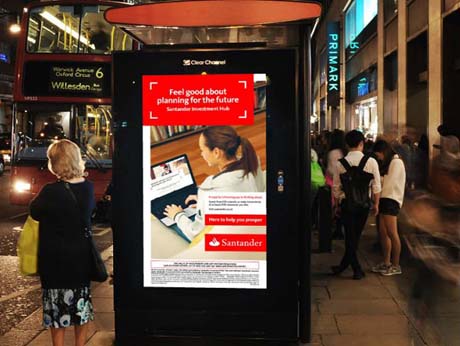
TECH DIRECTIONS 2018 - 2
December 27 2017: In the near future, marketing and advertising is all set to feel the hot wave of Artificial Intelligence and Machine Learning.
The problem is that today's consumer uses his or her mobile phone like a digital Swiss Army Knife with multiple virtual blades to access multiple services. But more often than not, the technology tends to overwhelm rather than empower. Advertisers went overboard with huge Out-of-Home (OOH) digital bill boards that distract rather than inform. There is already a backlash and a message to advertisers: Less is more. As consumers we part with personal data every time we download a free app or sign up for a free Internet service. Most of us don't care -- but we do expect that companies use the data we have provided to replace the barrage of aimless marketing messages with a smaller number of more sharply targeted and relevant messages.
Say hello, soon, to customized advertising in the digital age. Billboard-makers are now creating intelligent advertising that's sharply targeted at individual passers-by or shoppers. Attention-grabbing content responds to consumers' mobile phone activity or shared information networks. This is how it works:
You go to an mall, an airport departure area or a railway concourse. You log on to the free WiFi service. With that single act, 'they' know who you are, what your tastes are, your online shopping and reading history. You saunter to one of the many digital advertising kiosks to be found around you. When you get within 5 metres, the Artificial Intelligence-driven back end of the kiosk, has 'recognized' you. Last time you passed through Kochi airport, you had bought a Karlsburg shirt. The ad rolling on the kiosk quickly adjusts and flashes a message: a new range of Karlsburg linen shirts are in stock... do step in! If instead your past history shows you had bought a briefcase at the Hidesign store or a set mundu or dhoti at the MCR clothing store, the ad will quickly readjust, examine your last purchase and make some new suggestions. As you move away ( hopefully a renewed customer!), the kiosk senses the next approaching passenger an prepares a new advertisement. Fiction? Today, yes. But it will be there is 2-3 years -- in Kochi and every other Indian airport. It's called dynamic digital Out of Home advertising and companies like LivePoster are rolling it out in the West.
A Microsoft study concludes: "The future is “intelligent advertising” — advertising that understands individual consumers and can deliver tailored content at the right place, at the right time, and on the right platform. Brands capable of bringing the right content from the Internet to the fingertips (or even wrists) of consumers while intelligently avoiding “information overload” will be handsomely rewarded."
------------------------------------------------------------------------------------------------------------------------------------------
Latest updates:
Ad firms using AI tools to help them read your mind.
Using gadgets to track eye movements, computer maps of faces to capture a momentary grin (approval) or squinting (anger), and sensors to measure perspiration or monitor brain activity, companies are mining consumers' raw emotions for information.
Neuromarketing technqiues see computer maps of people's faces used to capture a momentary grin or a fleeting squinting of the eyes -- enough to indicate a consumer's reaction..... Read AFP report here
Audience Measurement 5.0 by Andrew Green, Ipsos Connect, UK. Read here and see a video with Green in our tedch video spot on the home page for a few days.
--------------------------------------------------------------------------------------------------------------------------------------------
AI is today tapping technology like 3-D and 360-degree video at AR/VR, to create amazing walk-thrus of famous places and heritage tourist attractions. A a partnership between Google and the Archaeological Survey of India has seen 374 Indian museums and heritage sites transformed into virtual walkthroughs with stunning interior and exterior views. (To get a feel of how this works, see the 3-D walk thru of Taj Mahal at Google Maps- Street View here ).
But here's the danger: There is a point of technological over kill. Travel agencies and tourist bureaux are creating stunning online replications of destinations: You can actually walk along that beach in Bali or inspect that mountain resort hotel, room by room by swiping or moving your mobile phone... and thanks to WiFo or that HDMI or MHL port, you can blow up the 3-D imagery and view it on your TV screen. Will you then say: 'OK let's book and go there'? Or will you say "This is so real! I feel I've already been there, so I won't bother."